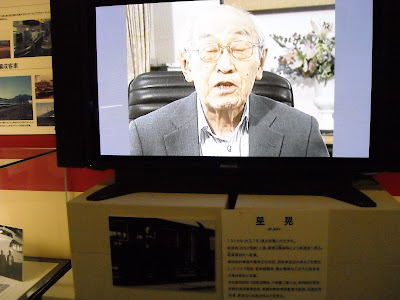
What better way to wrap up the Japan train trip with a day out to the Japan Railway Museum in Omiya.
It was still the Obon holiday and the school summer vacation. Omiya Railway Museum was jampacked with children out with their parents.
There were however a right mix of adults in the crowd. Two of them, parents out with their grownup daughter was feeling especially nostalgia for a
picture of an old train from Nagoya. They were singing out the tune the train would play as the train doors open and close.
When a curious visitor looked on, they again repeated the tune.

The museum is a huge building. It has to be as train engines and carriages from different era of railway development were housed within.
These include the first generation Shinkasen, the 'O' series that was retired with much fanfare in December.
On the wall of the museum was a timeline showing the development of railway in Japan, starting from the first steam engine in England.
The timeline stops on the year 2008 and has space left for the years 2009 to 2014. Going by JR track record, I await with bated breathe.





 to Russia on the last day of 2008.
to Russia on the last day of 2008.

























 ou will be right in the Chino highlands.
ou will be right in the Chino highlands.

 most famous battles during the Warring States period.
most famous battles during the Warring States period.






